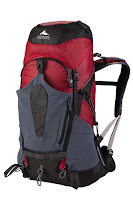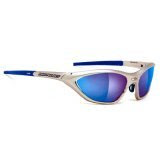
You can put over 250 miles on your bike completing in a single adventure race. You need to count on your bike setup to last through the tough conditions and abuse of long races, and you also need your bike to get you through your trainings by holding up week after week with minimal maintenance.
This is why I switched to disc brakes three years ago even though they are a bit heavier than rim-style v-brakes. I wore through a set of brand new v-brake pads partway through the Ecomotion 2005. That race was incredibly muddy and tough on bikes, and v-brakes just didn't cut it in those conditions.
I have found that disc brakes have more stopping power, particularly when you get to the bottom of a large hill. I was very glad to have disc brakes in the 2008 Baja Travesia, where I lost two spokes, and my wheel came way out of true. Again, I would have been dead in the water with v-brakes, but I was able to finish the race with no issues. My experience has led me to beleive that disc brakes are the only way to go for adventure racers.
I am happy to report that disc brakes have continued to evolve since I started using them. This year Hayes supplied DART-nuun with their brand new Stroker Trails. Here are the features of the Strokers that I believe have improve my riding:
- Power - the large brake pad surface area provides ample stopping to prevents crashes. They allow me to use one finger on each brakes lever and four fingers on each grip during technical downhills.
- Modulation - the brakes have an intuitive feel. The modulation allows me to descend better, but it also helps me to climb loose steep terrain and to get over obstacles. It does this by allowing me to apply the slightest amount of back brake, which keeps the front wheel on the ground.
- Consistent performance - there is no fade at the bottom of long hills. The brakes work well in wet muddy conditions found around the Pacific Northwest.
First the brake lever distance can be adjusted on the fly with no tools. Second the brake pads are extremly simple to install with no tools.
Hayes Stroker Trail disc brakes: $175.

























 The Reactive Stretch Technology (RST) neoprene surrounding my shoulders and lats combined with the preformed elbows allowed unrestricted arm motion through my entire stroke. This was crucial considering I made 10 plus swims greater than 15 miles long in a three month period while training for my goal. I just applied a little non-petroleum lubricant around the neck and under the arms and I was good for hours of continuous swimming.
The Reactive Stretch Technology (RST) neoprene surrounding my shoulders and lats combined with the preformed elbows allowed unrestricted arm motion through my entire stroke. This was crucial considering I made 10 plus swims greater than 15 miles long in a three month period while training for my goal. I just applied a little non-petroleum lubricant around the neck and under the arms and I was good for hours of continuous swimming.


